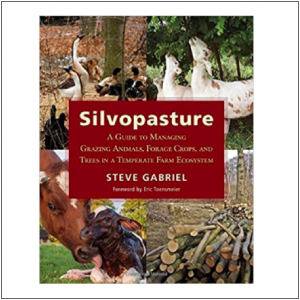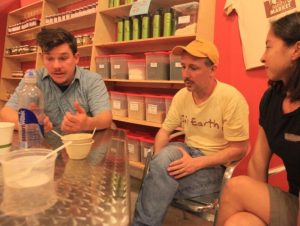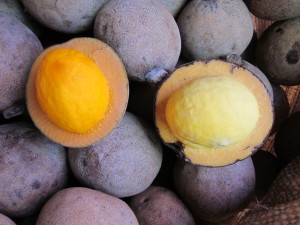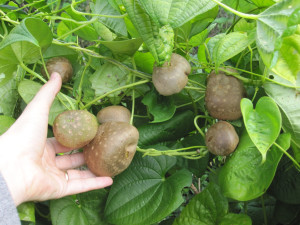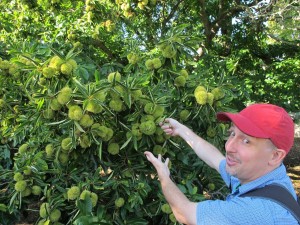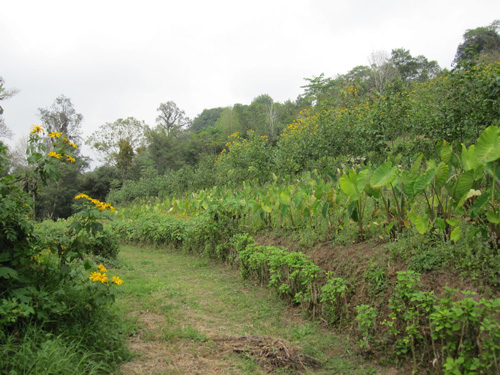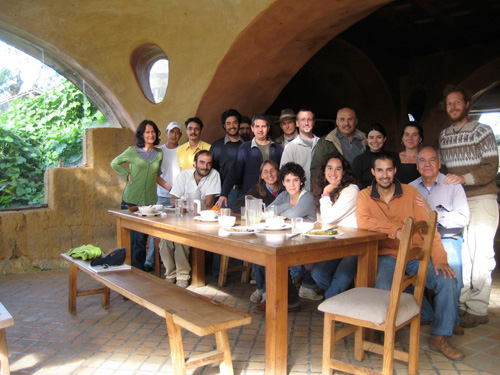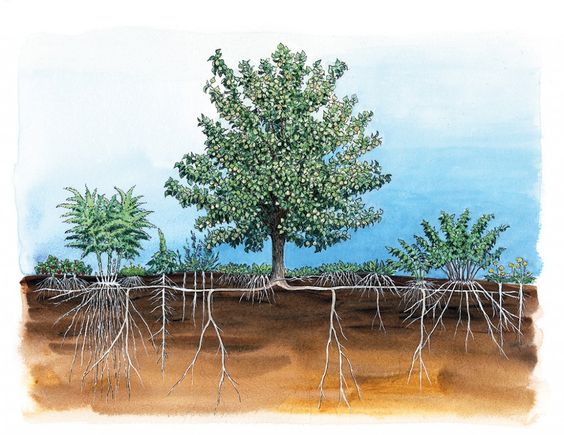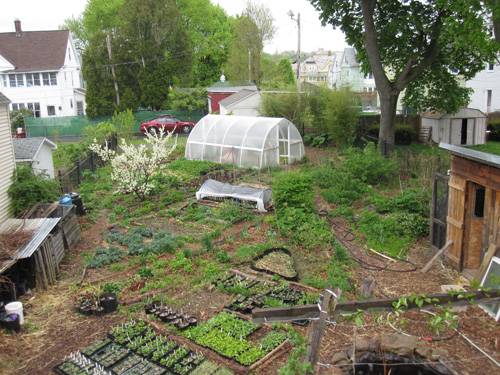It seems that everywhere I teach these days I am meeting people who are interested in scaling up the edible forest gardens model. Indeed, this form of carbon–sequestering food for stray could have a major impact on climate change if practiced on a much larger scale. But how do you develop a successful business to make this possible? This kind of regenerative enterprise planning will be one of the main topics of the upcoming financial permaculture course, this January 21-25, 2013 in subtropical Homestead, Florida.

A commercial food forest is a production system modeled on a forest ecosystem. It typically incorporates an overstory of tree crops, sometimes with several layers of woody plants underneath. The understory may be stocked with shade–tolerant herbaceous crops. Livestock can be incorporated to increase revenues and reduce labor and fossil fuel machinery use, though they can limit the types of crops grown in the understory.
One of the reasons that this is a challenging model is that as a species we are still learning to integrate overstory, understory, and livestock to create productive low–maintenance landscapes. When you add to this the need to develop a marketing and business plan it adds additional layers of complexity. Another challenge is that you typically must wait at least a few years until your woody and perennial crops begin to bear, though costs begin right away. You can add in the cost of planting and caring for nitrogen fixing species, plants that attract beneficial insects to reduce pest pressure, and other support plants to your budget. Then you might be selling new crops with which your market is unfamiliar, and it can be difficult enough to sell things that people already know and want to buy.
So you probably need to be an entrepreneurial person to take this on, someone who likes a challenge. The rewards are many. Food. Income. The chance to bring a piece of ground to life as an edible ecosystem, with you and the land together as part of the solution to many social and ecological problems. There are so many opportunities for interesting enterprises that it would be hard to get bored.
I’ve found in my travels as well that though this new generation of permaculturists is less intimidated by the world of business then old–timers like myself, there is a clear need for training and practice in regenerative enterprise planning. I’ve been having fun building a new curriculum around this need, which we piloted at the 2012 Carbon Farming course.
Earth Learning, our host for this course, has about 5 acres in production food forest with agroforestry and silvopasture demonstrations underway as well. Though their operation is tropical, the principles and process we will go through in the regenerative enterprise track would absolutely apply to farms in any climate. We’ll discuss market research, enterprise selection, shared marketing strategies and processing equipment, budgeting, and how to research the legal and permitting requirements of an agricultural business.
We will review case studies of successful regenerative enterprises from a range of climates. This is just a part of the course, which will also cover financing permaculture enterprises, community economic development strategies, and design projects.

